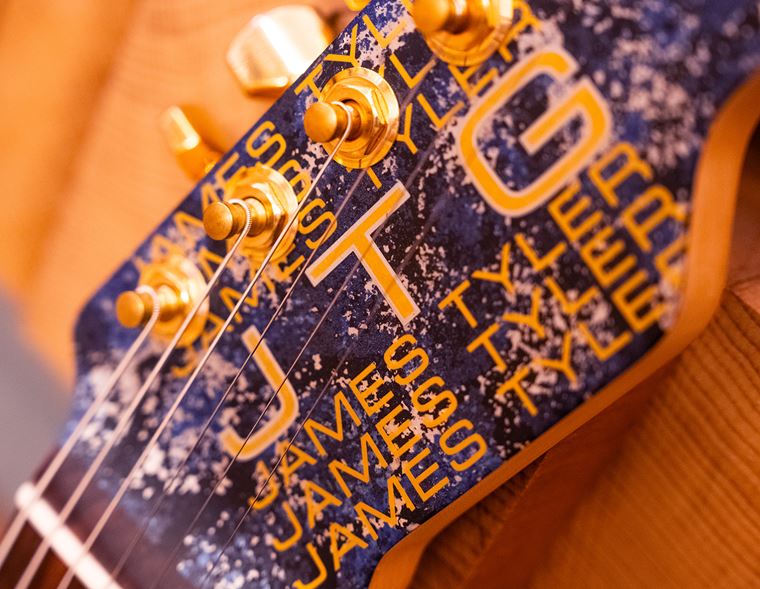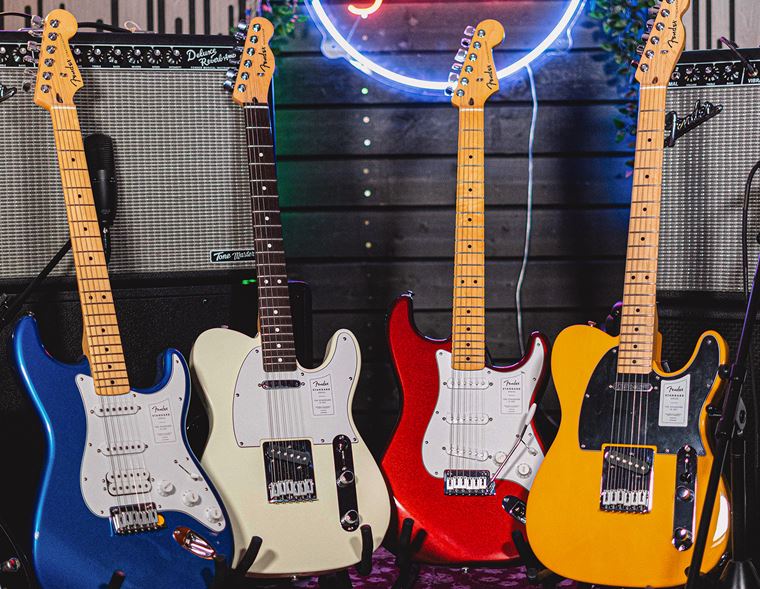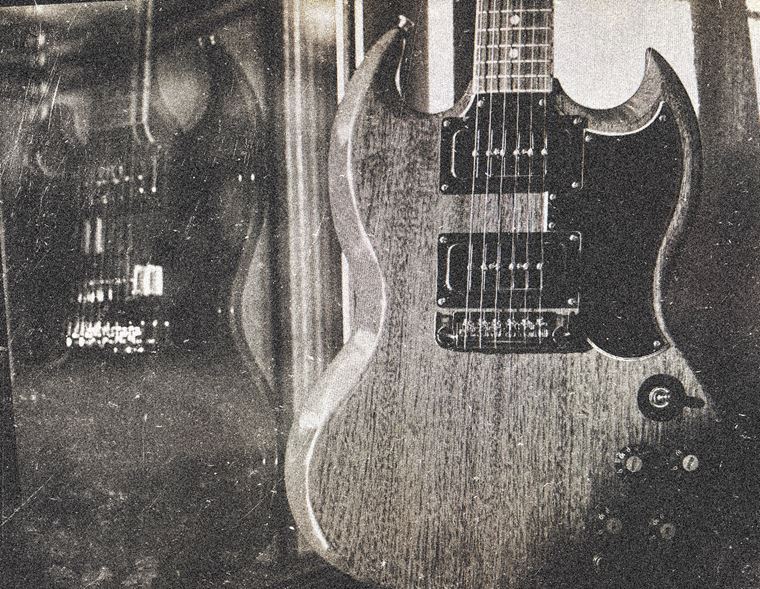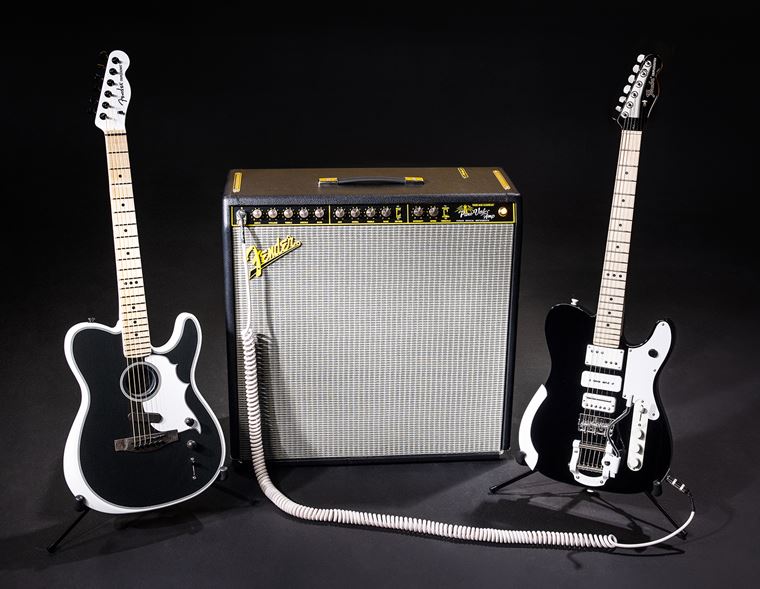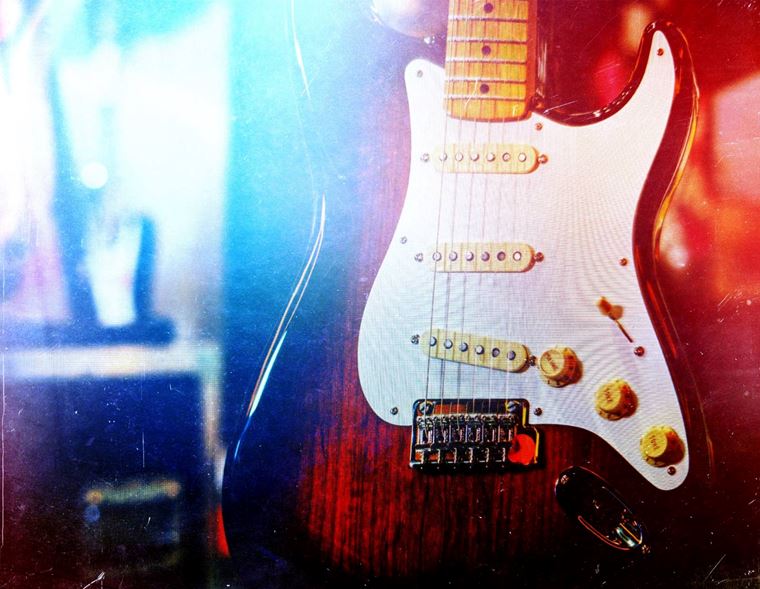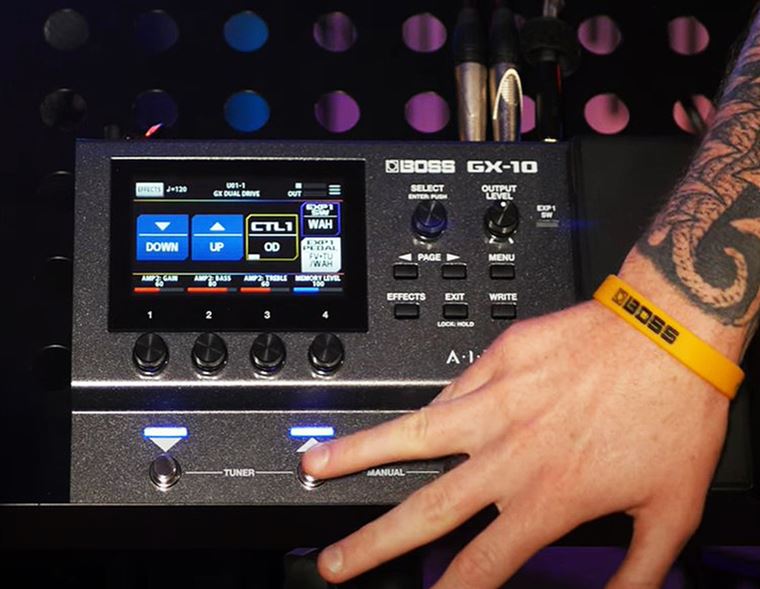Top Ten Greatest Guitar Tones Ever!
Published on 07 May 2020
Tone is all in the fingers.
Weeeeeell...yes and no.
It’s true that a great player can make anything sound good just as much as it’s true that expensive gear doesn’t disguise bad technique.
But obviously, if you want a Texas Blues sound, you maybe don’t want an active pickup and a screaming high gain amp, right? So, great tone is about having awesome technique and having the correct gear for the job. AND it’s also about applying the right type of sound at the right time. It’s a blend of these three elements that produces the unforgettable magic.
Our list below highlights ten sterling examples of this holy trinity in full flight. As ever, there are only ten spots here and so a great many wonderful pieces of tone-some playing will be left in the dugout, wondering what they did wrong. So it goes! Think of this as context for thought, and let us know what you would have instead!
Rather than setting these out chronologically, we’ve opted for a roughly clean-to-progressively-heavier method. It’s all about tone, after all! We think it’s interesting to look at these examples away from the context of time and appreciate them purely for sonics.
Here we go!
1. Wicked Game - Chris Isaak
It was between this and Apache, but we couldn’t resist the sublime lead work on display here! No disrespect to Hank, but we think this is the superior tone...
Bringing up all the romance of the 50s with a hint of darkness, the late James Calvin Wilsey’s twang-tastic licks made Wicked Game a sultry classic even before we got to Isaak’s yearning voice.
The leads on Wicked Game were played on a white 60s reissue Fender Stratocaster (not a vintage Strat, a new one!) into a Fender Silverface amp, with a generous helping of reverb and a subtle delay. The rest is indeed a combination of great touch, taste and whammy bar technique. Who wouldn’t want to sound like this?
2. Shine On You Crazy Diamond – Pink Floyd
As mysterious as the pyramids, as inscrutable as the sphinx, this long-form epic is rightly heralded as a guitar nirvana for those who appreciate space, melody, timing and drama.
There are many David Gilmour moments that could’ve been selected for this article, but we think that the relatively clean, undistorted tone here shows off his technique and touch more than any fuzzier moments from Dark Side etc. With this clean, wide open tone, there’s nowhere to hide! Gilmour demonstrates a great deal of artistry on this piece.
For this song, Gilmour used his famous Black Strat, set at the neck pickup and using a heavy plectrum. His amps were a Fender Dual Showman and a Hiwatt DR103, both of which were, according to reports, played at terrifying volume! Maybe change out volume for a compressor to help with the slight ‘squash’ he gets!
3. Miserlou – Dick Dale
This is a great example of also taking a Strat, some Fender Showman valve amps, excessive volume and coming to an entirely different tonal conclusion! Dale’s surf epic, based on an Eastern European folk melody, is pure attitude and swagger.
Lefty Dick Dale played his gold sparkle Strat (the Beast) with massive 10-60 gauge strings, strung like an upside down right handed guitar, with the low E at the bottom of the neck. His Dual Showman amps were in fact invented by Leo Fender for Dale, since he had a habit of blowing up amps by pushing them too far. What a guy!
Miserlou is a very physical piece to play, no matter how skilled you are. Dexterity and stamina are required to get through it convincingly, which is a real testament to what Dale was able to summon up on his instrument. Judging by how he pummelled his guitars, his plectrums must’ve lasted about a third of a song! It’s one of the greatest rock guitar instrumentals ever recorded though, and the tone is fierce! Dig in!
4. Sheik – ZZ Top
Tone connoisseur Billy Gibbons was always a sure shot for this list, such is his level of taste and ability to create superb tone. We all love Gimme All Your Lovin’ and Sharp Dressed Man, but for some truly superlative sonics, we’ve gone back to the Texan trio’s third album, Tres Hombres, to find some real gold.
We all know that Billy’s got the touch, but check out that Wah-wah control! That’s some advanced feel right there. Most players tend to rock their wah back and forth in time with the tune, which is super-boring. Take a leaf out of Reverend Willy’s book with this sterling example of stupendous playing. Mr Gibbons used Pearly Gates, his ’59 Gibson Les Paul Standard here, along with a Vox Clyde McCoy wah and (we think) either a Marshall Lead 12 or a Blonde Fender Bassman. Remember, 7-gauge strings and an old Mexican peso are what Billy uses! Through them rules out the door!
5. Money For Nothing – Dire Straits
Every uncle at a wedding is required to air guitar this immense hit from Knopfler and his crew. Why not? It’s one hell of a guitar part, with a dramatic lead up that properly frames its genius.
We’ll dodge the entirely questionable lyrical content and stick to the tone, because it’s quite exceptional. So, how did Knopfler get that sound? Well...there’s a lot been written and said about it. There was a wah, there wasn’t a wah... from what we can piece together, the engineer Neil Dorfsman said they were aiming for a ‘Billy Gibbons tone’, interestingly enough, but used a Les Paul Junior rather than the awesome (and surely more appropriate?) ’59 Les Paul Standard shown in the neon-encrusted video for the song. On top of that, there was a Laney 2x12 amp and a Shure SM57 which apparently ended up being accidentally pointed towards the floor for the actual recording. If there was a wah, it seems to be that it was a Morley, again, according to Dorfsman. We’ll let you investigate this particular case further on your own, but however it was achieved, it’s a fantastic sound!
6. Flash and Crash – Rocky and the Riddlers
We first heard this unbelievable tune back in the past (well, the early 00s...) when music magazines stuck carefully curated CDs to their front pages. Remember that? Well, we found this song on one of those and never forgot about it. The first thing you hear on this tune is one of the scuzziest, most evil guitar sounds ever recorded, followed by a fantastic, strutting groove and some awesome Garage-Punk vocals. It’s fantastic!
Sadly, there isn’t much info out there on this band. The members, the songs (apart from this one) and almost everything else is a bit of mystery, apart from the fact that they were based in Seattle and that this song is from 1966. That’s it! Who played guitar? What guitar did he use? We have no idea. It’s like a theme tune from an unmade Tarantino film, so possibly they still exist in some parallel universe. Here’s hoping!
7. Machine Gun – Jimi Hendrix
This is an insane display of genius guitar playing from the maestro himself, from an album that’s an entirely live recording. Machine Gun, at 12 minutes, is one of Hendrix’s longest compositions, but as it stands, it’s as much a Holy Grail moment as Voodoo Child (Slight Return).
Hendrix’s damning critique of the Vietnam war is expressed through howls of rage and despair, with an electrifying performance that has perhaps never been equalled. The great part is, to be honest, all of it, but the 4 minute mark is where you’ll hear the famous sustaining note.
Jimi used one of his black and white Strats (it goes markedly out of tune after his whammy frenzy half-way through) into a full Marshall plexi stack (with 6550 power tubes). This is Jimi’s most overt use of the Uni-Vibe, which squelches its liquid gold tone throughout the entire track. He also had a wah (Crybaby or Vox, we aren’t sure), an Axis Fuzz, a Fuzz Face and a Roger Mayer Octavia at his feet. Feedback, therefore volume, plays a major part in this song, too. In the hands of a master it’s a thrill on quite another level.
Annoyingly, Hendrix's estate don't seem to like making his music available on YouTube, so we've included this short clip above instead of the tune. Sorry, folks! Hey, you should have this record already!
8. The Fly – U2
If one were to talk about The Edge’s guitar tone, we definitely don’t think this song would spring to mind! His iconic dotted delay clean tone is what he’s famous for, but this particular sound is, by some margin, his most incredible. Dirty, difficult to pin down and full of groove, The Fly (it pushed the Ninja Turtles tune off the no1 spot in the UK charts) is one of the greatest guitar tones ever created.
So, there is obviously quite a lot going on here! The video shows Edge playing his cream Gibson Les Paul Custom, but we reckon the recording was made with one of his many Fender Strats: this particular tone’s size comes more from the dollops of delay and reverb used than from a thick sounding guitar like a Les Paul.
There’s a bunch of overdrive there too, more that we usually hear with the Edge, and some definite wah pedal use. The wah seems to be used more as a tone filter: the intro has a nasal twang and the solo has lots of sonic movement. We also hear some sort of modulation, but it’s such a mercurial sound, it could be a few things...
Since The Edge owns an unholy amount of pedals and processors, it isn’t easy to accurately predict what he used for this particular song. At this period, he was fond of Chandler Tube Drivers, and the delays are almost certainly from his TC 2290 units. Edge fans will know that many of the adventurous tones on Achtung Baby were helped along by a Korg A2 rack unit, so that may well have played a part in the resulting sound. We can be sure about him using his old 1964 Vox AC30 combos, though!
There is, however, another important piece of potential evidence here. It’s little-known and therefore perhaps not true, but we did hear that the Edge, unhappy with his guitar’s sound in the overall mix, went back and laid down an additional overdub directly on top of the semi-final mix! This most unorthodox of moves may explain why it’s so hard to pin this tone down: one guitar alone cannot achieve it! Certainly, live performances of the song never sound like the recorded version, so perhaps there’s a grain of truth in this mysterious tale...
9. Unchained – Van Halen
As with Billy Gibbons, it’s no great surprise to find Eddie Van Halen on our list today. His ‘Brown’ sound is still the ultimate tone goal for most hard rock players, after all! Having said that, VH fans don’t always agree on the best particular flavour of brown that they consider to be the defining example.
We’d say that his tone from the David Lee Roth years is broadly similar, with tiny nuances that could be down to various factors. Eddie is known as a tinkerer of his equipment, never able to leave things alone without first sawing into it or dipping it in wax. Debate rages on about what he played on which song, but we get a little bored about all that, because we already know what his best tone was. It was this one:
Yes, Unchained is not only a stonker of a riff, it’s the best example of the Brown sound that’s out there! We think the genius addition of an MXR flanger, kicked in during the riff’s palm-muted pedal tone notes, sends it over the edge into greatness. Here’s what Eddie says:
“I was just goofing off and experimenting. It wouldn’t have sounded good to use the flanger all the way through. The riff just needed a little bit here and there. It’s a cool, tasty little tidbit that I threw in there to draw attention to the riff.”
Apart from the MXR flanger, Unchained was Eddie’s Frankenstein guitar and his modded Marshall. Lots of gain, lots of upper mids, total attitude. 9-gauge strings are the way here, though Ed’s daftly thin .60mm plectrums are a bit much: they may work for him but we recommend trying a selection before slavishly copying this eccentric choice for shredding! Secret tip: Eddie holds his pick between thumb and middle finger, not index! It lets you tap easier...
10. Sad But True – Metallica
Is this the best heavy guitar sound ever? It could well be. Since Metallica’s Black album was released in 1991, every Rock and Metal guitarist has tried to nab the sound, so we’d say it’s influential to say the least!
James Hetfield (Kirk Hammett only played solos on the records of this era) had already shown the world he was the boss of the monster-toned metal riff with the band's Master of Puppets and ...And Justice For All albums. His ability to create bone-shaking riffs that were also catchy and groovy was well established. Even so, his efforts on the Black Album (nobody uses its eponymous ‘actual’ title) went off the chart.
The main riff is beyond mighty, but how about that tone?! Captain Crunch or what? So, just how did Hetfield achieve it? Well, apart from being a fantastic guitarist, he also threw tons of cash on his rig: this type of tone is as expensive as it sounds...
His guitars were custom made ESP Explorer models. This track used the now discontinued MX-220 model, which nowadays is close to ESP’s EX models. EMG pickups are the way to go: the immortal 81 in the bridge and a 61 in the neck. The guitar was strung with 11-gauge strings and tuned down one whole step to D standard.
Papa Het used his famed Mesa Boogie Mark IIC++ amp, which was his main tool on previous Metallica records. Most people expect this to have been a Mesa Dual Rectifier but that is not actually the case! The Boogie’s graphic EQ was ‘scooped’ to remove the mids (the EQ curve resembles a grin), especially at the 1.2kHz point. Importantly, the signal was then routed through two Aphex EQs and and Aphex expander/Compressor, adding a sheen of production.
That’s not all! This setup provided the main rhythm tracks, but a Marshall amp was also used for additional overdubs in order to bring back some of the mids chopped from the Boogie. This is one of the missing puzzle pieces! Also, further tracks were laid down using a Jerry Jones baritone guitar which was tuned an entire octave beneath the already downtuned ESP guitars.
And that’s still not all! For the final spikes atop this impenetrable fortress of tone, further overdubs were added for just the chug-chug palm muted bits! Just for extra heaviness!
This attention to detail and steadfast commitment to achieving a singular vision is why Metallica have the best heavy guitar sound ever.
Conclusions
Where’s Sultans? Apache? Yeah, yeah, we know! There were only ten spaces available to get all of electric guitar history covered! Number eleven was due to be How Soon is Now? by the Smiths, which would have delighted and repulsed many of you in equal measure!
Such is the way of it. Well, let us here about it! What would you have up on here? Clapton? Sure, but instead of Hendrix? Forget it! Hey if you disagree, we want to know! How many of our choices do you agree with?
However you feel about our selections, we hope you have enjoyed going through these songs with us, and maybe learned a cool trick or two to boot! Maybe you can try Hetfield’s overdub tricks next time you’re tracking some riffs? Maybe study Billy Gibbons’ wah technique and up your game a little? It’s all there for the taking, folks! Enjoy!
Thank you for reading!

